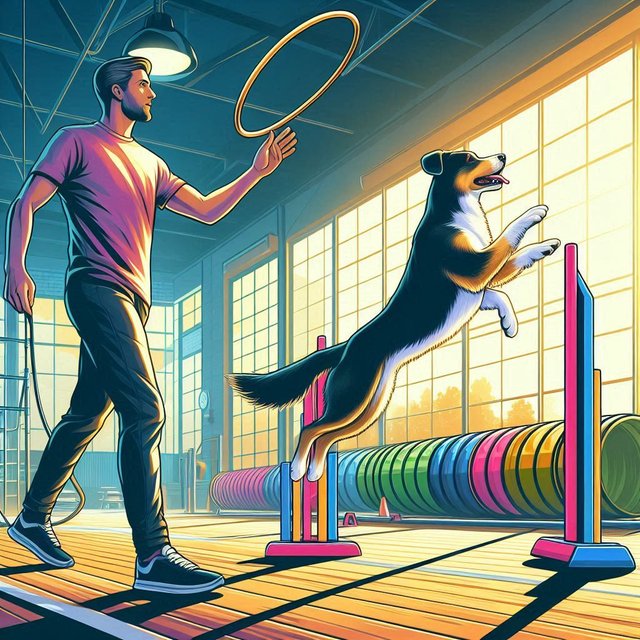Comprehensive Guide to Effective Dog Training

Introduction
Training a dog is a crucial aspect of responsible pet ownership. It not only ensures the safety and well-being of the pet but also fosters a harmonious relationship between the dog and its owner. This guide delves into the essential aspects of dog training, covering basics, necessary equipment, and advanced techniques. By following these detailed steps, you can ensure your dog becomes well-behaved and responsive, making the experience enjoyable for both of you.
Chapter 1: Training Basics
Understanding Your Dog
To begin training effectively, it's essential to understand your dog's behavior and temperament. Each breed has unique characteristics, and knowing these can help tailor your training approach.
Basic Information
• Toilet Training: One of the primary concerns for new dog owners is toilet training. While some dogs adapt quickly, others may require more patience. Consistency is key; taking your dog to the designated toilet area regularly and rewarding them for using it can expedite the process.
• Behavioral Adaptation: Dogs react differently to various environments. Some may be comfortable with noise and changes, while others may get anxious. Gradual exposure and positive reinforcement can help them adapt better.
• Destructive Behavior: Addressing issues like chewing and digging is crucial. Providing appropriate toys and ensuring they have enough physical and mental stimulation can mitigate such behaviors.
Chapter 2: What Equipment Do You Need
Identifying Training Goals
Before purchasing equipment, it's important to determine the training objectives. Whether it's basic obedience or preparing for competitions, having a clear goal can guide your choices.
Essential Equipment
• Leash and Collar: These are fundamental for most training exercises.
• Treats: Positive reinforcement through treats can be highly effective.
• Specialized Equipment: For more advanced training, such as agility or service dog training, specialized equipment may be required.
Chapter 3: Start With Easy Commands
Key Commands to Begin With
• Come: This command establishes control and should be one of the first taught.
• Sit: Useful for calming your dog and making them stay still during various activities.
• Stay: Helps in keeping your dog in one place, which is particularly useful in busy or potentially dangerous situations.
Starting Small
Begin with short training sessions to keep your dog engaged. Gradually increase the duration as they become more accustomed to following commands.
Chapter 4: Moving On To More Advanced Commands
Advanced Training Techniques
• Place Command: Teaching your dog to go to a specific spot and stay there can be very useful.
• Heel: This command ensures your dog walks beside you calmly without pulling on the leash.
• Recall: An advanced version of the 'come' command, recall training is crucial for off-leash activities.
Chapter 5: House Training
Steps for Effective House Training
• Consistent Toilet Area: Always take your dog to the same spot to do their business.
• Positive Reinforcement: Reward them immediately after they finish to reinforce the behavior.
• Understanding Signs: Learn to recognize when your dog needs to go out, such as sniffing around or circling.
Preventing Accidents
Accidents can happen, but consistent training and patience will reduce their frequency. Never punish your dog for accidents; instead, focus on reinforcing positive behavior.
Chapter 6: Make Sure To Use Rewards And Not Punishment
Positive Reinforcement
Reward-based training is proven to be more effective and humane. It encourages your dog to repeat desirable behaviors for treats, praise, or playtime.
Avoiding Punishment
Punishment can lead to fear and anxiety, hindering the training process. Focus on rewarding positive actions and redirecting unwanted behavior instead.
Chapter 7: The Trouble With Not Training Your Dog
Consequences of Lack of Training
• Behavioral Issues: Untrained dogs can develop problematic behaviors, such as aggression or excessive barking.
• Safety Concerns: A dog that doesn't respond to commands can be a danger to themselves and others.
• Strained Relationship: Lack of training can lead to frustration for both the dog and the owner, affecting their bond.
Conclusion
Training your dog is an ongoing process that requires patience, consistency, and positive reinforcement. By understanding your dog's needs and utilizing the right techniques, you can foster a loving and well-behaved pet. Remember, a trained dog is not only a joy to have but also a safer and happier companion.
FAQs
- Why is dog training important?
Dog training is crucial as it ensures the safety and well-being of the dog, fosters a harmonious relationship between the pet and owner, and prevents behavioral issues. - What are the basic commands every dog should know?
Basic commands include 'Come', 'Sit', 'Stay', 'Heel', and 'Place'. These commands establish control and ensure the dog's safety. - How can I toilet train my dog?
Consistency is key in toilet training. Take your dog to the designated toilet area regularly and reward them for using it to reinforce the behavior. - What should I do if my dog exhibits destructive behavior?
Providing appropriate toys and ensuring your dog has enough physical and mental stimulation can mitigate destructive behaviors like chewing and digging. - What equipment is essential for dog training?
Essential equipment includes a leash, collar, treats for positive reinforcement, and specialized equipment for advanced training. - How should I handle accidents during house training?
Never punish your dog for accidents. Instead, focus on reinforcing positive behavior and being patient and consistent in training. - What are the consequences of not training my dog?
Untrained dogs can develop behavioral issues, pose safety concerns, and create a strained relationship between the dog and the owner.